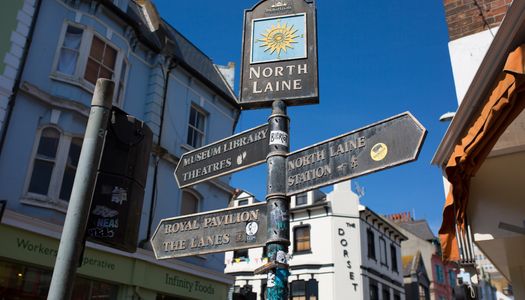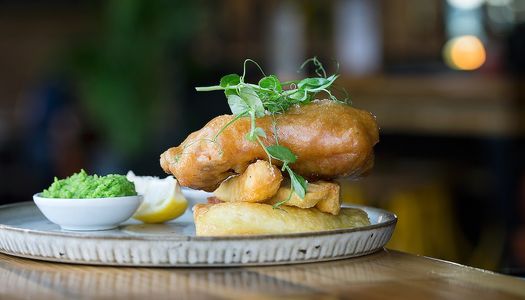restaurants near
Brighton's Royal Pavillion
welcome to the royal pavilion in brighton
The Royal Pavilion in Brighton is one of the city’s most iconic landmarks, known for its exotic architecture and vibrant history. Originally built as a modest seaside retreat in the late 18th century, it was transformed into the opulent palace you see today under the direction of Prince George IV, also known as the Prince Regent. George began expanding the Pavilion in 1815, employing renowned architect John Nash to create a palace that reflected his love of art, culture, and excess. The result was a fantastical blend of Indian and Chinese architectural styles, making it unlike anything else in Britain.
Nearby attractions include the Brighton Museum and Art Gallery, Brighton Dome, Brighton’s Komedia and the famous Brighton Palace Pier. With so much to see and do, the Royal Pavilion offers the perfect starting point for a fun-filled day in Brighton.
RECOMMENDED:
Special Offers
Brighton Experiences
Restaurants on the seafront
The Party Palace
The Royal Pavilion wasn’t just a royal residence—it was the Prince Regent’s party palace. He would regularly escape the rigours of London life to indulge in lavish parties, dinners, and entertainment in Brighton, a tradition that helped cement the city’s reputation as a place of fun and freedom. George’s love for music, art, and entertainment attracted the elite of British society, and the Pavilion became the epicentre of high-society gatherings. This early reputation for indulgence and revelry is part of Brighton’s lasting identity as a lively, vibrant destination.
Pictured: Brighton’s Royal Pavilion in All Its Splendour!
what to expect at the royal pavilion Brighton
Today, visitors to the Royal Pavilion can explore its stunning interiors, including the Banqueting Hall, Music Room, and Great Kitchen, all of which reflect the prince’s extravagant tastes. The décor, with its dragons, gilded columns, and opulent chandeliers, offers a glimpse into the life of luxury led by one of Britain’s most flamboyant monarchs. You can also stroll through the Pavilion Gardens, a beautifully restored example of Regency-era landscaping.
Pictured: The Annual Christmas Ice Skating at the Royal Pavilion in Brighton
Nestled in the Heart of Brighton’s Vibrant Districts
The Royal Pavilion is located in the heart of Brighton, making it easy to combine with other activities. It sits between The Lanes, North Laine, and the New Road area—Brighton’s busiest and most exciting districts. Just steps away, you’ll find hundreds of restaurants, bars, and pubs, perfect for grabbing a bite to eat or a drink after your visit. Whether you’re in the mood for modern British cuisine or something more exotic, Brighton’s vibrant food scene has something for everyone.
Pictured: The Royal Pavilion Gardens, great for walks and picnics.
6 top restaurants nearby
Here are six top restaurants near The Royal Pavilion in Brighton, each offering a unique dining experience within a short stroll of this iconic landmark.
Al Duomo
Just steps from the Pavilion, Al Duomo is one of Brighton’s longest-standing Italian restaurants. Known for its authentic, wood-fired pizzas and classic pasta dishes, this family-friendly spot offers a warm, welcoming atmosphere. Whether you’re craving a hearty lasagne or a slice of Neapolitan pizza, Al Duomo is perfect for those seeking comforting Italian cuisine in a cosy setting.
Furna by Dave Mothersill
A few minutes’ walk from the Pavilion, Furna is the latest venture from celebrated chef Dave Mothersill. With a focus on seasonal British ingredients, this upscale dining destination delivers an ever-evolving tasting menu showcasing the best of local produce. Furna’s refined dishes, elegant interiors, and exceptional service make it ideal for a special meal after a day exploring the Pavilion.
English’s of Brighton
Located in The Lanes, English’s is a seafood institution. For over 150 years, this restaurant has been serving up fresh, sustainably sourced seafood. Expect everything from classic fish and chips to oysters and lobster. Its charming Victorian setting and fresh coastal flavours make English’s a must-visit for seafood lovers near the Pavilion.
Tinto Taperia
For a taste of Spain, head to Tinto Taperia just a short stroll from the Pavilion. This lively tapas bar serves a selection of Spanish favourites like patatas bravas, chorizo, and seafood paella. With a relaxed, vibrant atmosphere, Tinto Taperia is a great choice for those looking to share small plates in a casual setting. We would also highly recommend Bar Valentino which is located above and is highly regarded as on e of Brighton’s best cocktail bars.
The New Coal Shed at Clarence House
Recently reimagined, The Coal Shed at Clarence House combines its famous fire-cooked meats with a more elevated dining experience. The menu now includes seafood, vegetarian, and vegan options, all prepared with a focus on seasonal ingredients. A quick walk from the Pavilion, this is a prime spot for foodies looking for expertly grilled dishes.
Tutto
Located close to the Pavilion, Tutto brings Italian-inspired dining to Brighton with a modern twist. This trendy spot offers handmade pasta, antipasti, and carefully curated wine pairings. The open-plan kitchen and stylish décor make Tutto perfect for a leisurely meal or celebratory dinner.
Pictured: Furna Restaurant on New Road.
Excellent pubs near to the Royal Pavilion
In our Royal Pavilion guide, we also highlight a number of excellent Brighton pubs nearby if that’s your thing.
Just around the corner is The Cricketers, one of Brighton’s oldest pubs, steeped in history and offering classic British pub fare in a cosy, traditional setting. Its vintage charm makes it the perfect spot to unwind after sightseeing. Also close by, The Black Lion mixes history with modern vibes, offering a wide menu of pub favourites, craft beers, and cocktails in a lively atmosphere.
For something more contemporary, The Mesmerist is a quirky, vintage-inspired pub just a few minutes from the Pavilion, known for its rooftop bar and street food-inspired dishes. Meanwhile, The Dorset, also nearby, is a laid-back city-centre pub with hearty meals like burgers and fish and chips, perfect for a relaxed meal after a day of exploring. Each of these venues offers a welcoming spot to grab a pint and recharge.
Pictured: The Cricketers
must-visit brighton attractions nearby
Brighton is bursting with nearby attractions, all just a short walk from the Royal Pavilion! In under five minutes, you’ll find yourself at the iconic Brighton Palace Pier, offering seaside fun with arcade games, thrilling rides, and stunning sea views. Right next door is the fascinating Sea Life Centre, where you can immerse yourself in the wonders of marine life.
Cross the beautiful Pavilion Gardens and you’ll stumble upon the historic Brighton Theatre Royal on New Road, renowned for its world-class performances. Just opposite is the vibrant Brighton Dome, a hub for music, arts, and entertainment, with the adjacent Corn Exchange hosting exciting exhibitions and events. All of these attractions create an unforgettable experience, making it the perfect day out in Brighton!
Pictured: Brighton’s Theatre Royal




